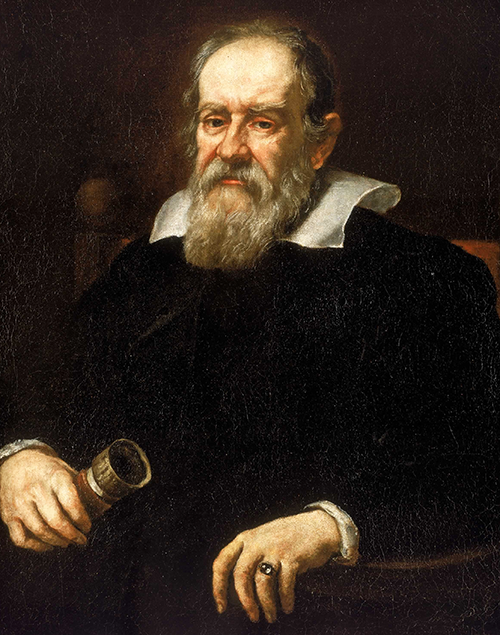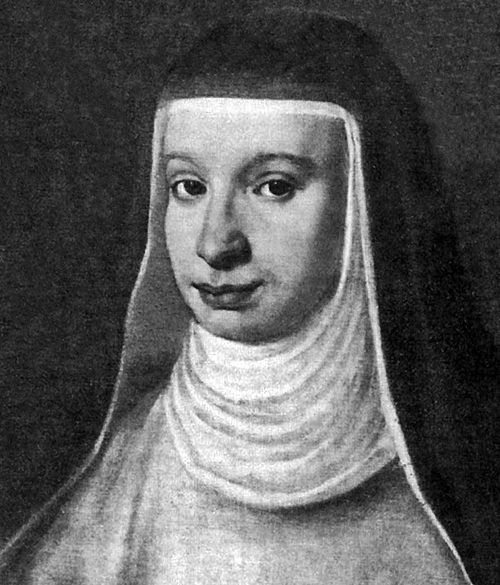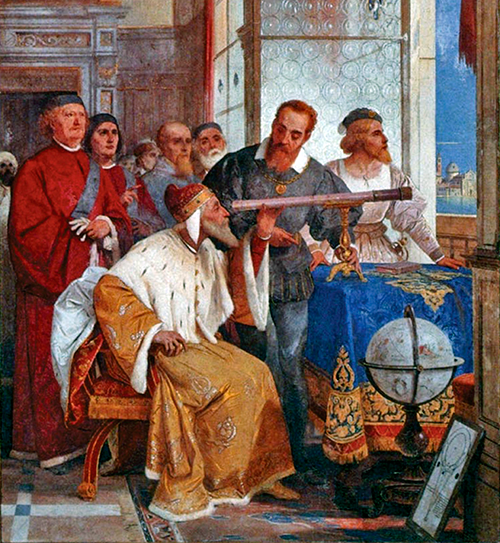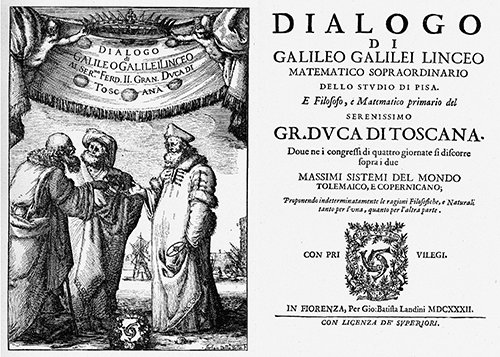Galileo Galilei: an experimental, observational and theoretical scientist who communicated effectively
Bill Dennison ·'Scientists who made a difference' series
Galileo Galilei, like modern rock stars, is commonly known by only his first name. Galileo was friends with the Pope and many influential Europeans, taught at several universities, invented scientific equipment including the telescope and authored widely read books. He was born in 1564 in Pisa, Italy, a few hours before another Italian died, known by his first name only, Michelangelo and a few months before William Shakespeare was born in England. Galileo was the eldest child of a musician Viscenzo Galilei, who performed experiments with musical instruments.

Galileo attended but did not finish his university studies at the University of Pisa. He started in medicine but became interested in physics and mathematics, so his topics of study turned toward the sciences. He tutored students at the University of Pisa, taught at The Academy of the Arts and Drawing in Florence, was the Head of mathematics at the University of Pisa, before joining the faculty at the University of Padua (1592-1610). He moved to Florence in 1610, where he was employed by his patron the Grand Duke of Tuscany, Cosimo Medici, the founder of the Medici political dynasty.
During his career at the University of Padua, Galileo fathered three children with a young Venetian woman, Marina Gamba who was fourteen years younger than him. They never lived together, but she moved to a house in Padua with their children. Scholars in this era typically remained single. Galileo and Marina produced two girls and one boy. Galileo had the two girls placed into a convent due to their having unwed parents, but he was able to have his son Viscenzo legitimized at a later date. Marina died in 1619 and Galileo assumed the parental duties of his children.
Dava Sobel wrote a delightful book, published in 1999 about the life of Galileo from the perspective of his beloved daughter titled "Galileo's Daughter: A historical memoir of science, faith, and love", based on the surviving letters of Galileo's eldest child. Galileo's first child was christened Virginia, but she took the name Sister Maria Celeste when she entered a convent with her younger sister, Livia. Maria Celeste was highly intelligent and very much doted on her father. They shared a long and active correspondence. Maria Celeste became his confidant and was found buried with her father, and even when his body was relocated to the present location in the Basilica of Santa Croce in Florence, Italy, she remains buried with him.
Galileo's letters to Maria Celeste have been lost, and only her letters to Galileo are preserved, but some the content of his letters can be discerned through her responses to his letters. The letters between father and daughter were typically carried along with various baskets containing medications (Maria Celeste was the convent apothecary and sent her father various medications for his ailments), foods and laundry. Maria Celeste relied in her father's generosity for improving her spartan life in the convent and her requests (always granted) are included in her letters to her father. The letters reveal that while Galileo was inventing physics, discovering celestial phenomena and educating princes; he was also buying thread, sending fruit and choosing organ music for his daughter.

Galileo was very much an experimental scientist, conducting experiments with gravity by dropping balls from the Leaning Tower of Pisa and rolling balls down inclined planes. He combined his experimental approach with his observational skills (e.g., viewing celestial bodies with his telescope) and with his theoretical and mathematical skills to produce revolutionary insights into the natural world. Galileo also invented various scientific tools that he needed to use to observe nature.
Galileo was a gifted science communicator and he wrote in Italian instead of the less accessible Latin or Greek, and richly illustrated his books with hand drawings. He wrote “I wrote in the colloquial tongue because I must have everyone able to read it.” Galileo also used the literary device of constructing a dialogue between different people to convey scientific principles. He incorporated humor and wrote poetically to a broad audience. He used 'postils', short summary phrases in the margins to aid the readers as well. Many of his books were best-sellers at the time of their publication.
Galileo used the refracting telescope to view various heavenly objects. He viewed the phases of the moon, discovered the planets of Jupiter, observed sunspots, comets and the Milky Way. He wrote the book Starry Messenger in 1610 about his observations, which was sold out within a week of publication. He wrote “I render infinite thanks to God, for being so kind as to make me alone the first observer of marvels kept hidden in obscurity for all previous centuries.”

Galileo became friends with Cardinal Maffeo Barberini who first wrote to Galileo in 1611, and even wrote a poem about him. Cardinal Barberini became Pope Urban VIII in 1623, but in spite of his personal friendship and admiration for Galileo, ten years later, 1633, Galileo stood trial for heresy by the Holy Inquisition as result of his popular 1632 book, “Dialogue on the Two Chief World Systems: Ptolemaic and Copernican.” In this book, Galileo attempted to provide both sides of the argument about whether the earth revolves around the sun or vice versa. Galileo even included the following subtitle “Propounding inconclusively the philosophical and physical reasons as much for one side as for the other.” Three main characters in the book talk over a four day period: 1) Salviati who took the Copernican viewpoint, 2) a neutral layman Sagreeo, and 3) the character Simplicio who took the Ptolmaic viewpoint and espoused words that the Pope had used. Needless to say, the Copernican viewpoint wins out in the book and the Simplicio character was viewed as ridiculing the Pope.
Galileo was convicted of heresy and placed under house arrest until his death. His book “Dialogue on the Two Chief World Systems: Ptolemaic and Copernican" was placed on the Index of Prohibited Books, where it remained for nearly two hundred years. As part of his sentencing, Galileo was forced to recant the Copernican view that the earth revolved around the sun, and the words "And yet it moves" have been attributed to Galileo following this recanting, referring to the fact that regardless of church doctrine, the earth was still moving around the sun.

Galileo continued to publish while under house arrest, but the publisher was in a Protestant country (Holland). A young student, Viscenzio Viviani, looked after Galileo in his final years, as Galileo went blind and had to dictate his writings. Galileo died in Florence in 1642, the same year Isaac Newton was born.
Albert Einstein referred to Galileo as the "Father of modern science". NASA launched the Galileo spacecraft in 1989 and it traveled to Jupiter where it orbited for nearly 15 years and described the planet and its moons, originally discovered by Galileo. A NASA astronaut, David Scott, dropped a feather and a hammer at the same time during a moon walk. When they hit the moon's surface at the same time, he said "This proves that Mr. Galileo was right." The Catholic church reassessed Galileo's contributions and several twentieth century popes publicly expressed regret at how the Catholic Church treated Galileo. There are various busts and statues for Galileo and the United Nations declared 2009 'The International Year of Astronomy' to commemorate the four hundred year anniversary of the invention of the telescope.
About the author
Bill Dennison

Dr. Bill Dennison is a Professor of Marine Science and Vice President for Science Application at the University of Maryland Center for Environmental Science.
Next Post > Adventures in producing an eBook: Dancing with dugongs eBook released
Comments
-
Mary O'Neil 12 years ago
Nice article, Bill. I have to add that the Catholic Church's decision finally to rehabilitate Galileo was due to the Polish Pope John Paul II. Galileo had been convicted of "Copernicanism" and Copernicus, of course, was Polish. So his motivation was the cultural nationalism of Poland, "the Christ of nations" as they like to call themselves (due to multiple historical dismemberments). No other motive has been identified for this VERY belated and out of the blue "vindication."
Maybe someday they will have a revelation about birth control...
Ciao, Mary

